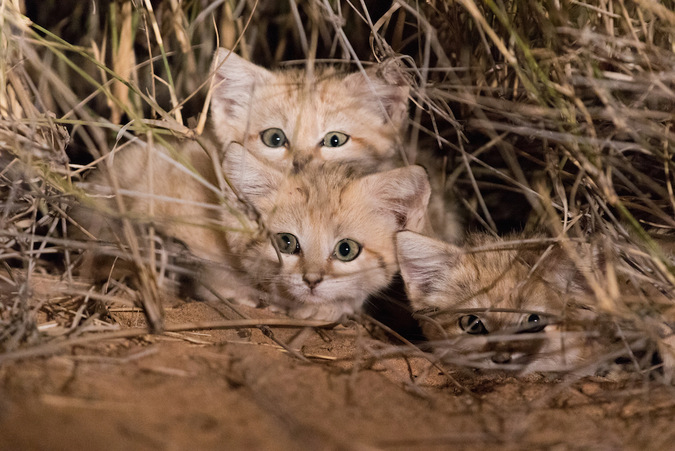Posted on June 1, 2020 by Team Africa Geographic

Lions (Panthera leo) © Kaido Haagen
For the most part, the big cats of Africa need no introduction, but it is not necessarily common knowledge that seven other cat species call Africa home. Most of these are small, secretive and seldom seen, even by the researchers attempting to learn more about their behaviour and ecology. They may not be as well-known as the big cats, or indeed as easy to see, but these medium-sized and small cats are equally beguiling. They also face the same threats – habitat loss, deforestation, bushmeat poaching and indiscriminate snares are sweeping threats to wildlife regardless of size.
These are the ten cat species of Africa (as currently recognised by the Cat Classification Task Force of the IUCN’s Cat Specialist Group):
Big cats
1. African lion – Panthera leo
The largest of our cat species and the second largest in the world, these iconic big cats are the apex predator in all of the African wilderness areas in which they occur. They are also the only true social cat species on the planet.
In 2014, the IUCN assessed their population as ranging from between 23,000 to 39,000 individuals but more recent assessments from Panthera and other conservation organisations now suggest that there may be less than 20,000 wild lions in Africa. Lions are classified as ‘vulnerable’ on the IUCN Red List.
2. African leopard – Panthera pardus pardus
Secretive yet highly adaptable, the exquisite aesthetic and graceful power of leopards make them a firm favourite for safari-goers. Their rosetted coats provide the perfect camouflage which in turn allows them to be extremely successful ambush predators, but their light-footed approach to stealth belies their sheer strength. Where necessary, leopards can lift kills over twice their body weight metres high into suitable trees.
Though the African leopard was confirmed as a subspecies by the Cat Classification Task Force of the IUCN’s Cat Specialist Group in 2017, leopards from Africa and across Asia are considered to be the same species, meaning that they have the most extensive distribution range of any of the big cats. Due to their secretive, solitary nature, there are no accurate estimates of how many leopards there are left in the wild. Leopards are classified as ‘vulnerable’ on the IUCN Red List.

Leopard (Panthera pardus) © Nick Dale
3. Cheetah – Acinonyx jubatus
Fleet-of-foot yet slight and retiring, the cheetah is something of an odd one out. As the fastest land mammal in the world, it also boasts the highest hunting success rate of the big cats but is constantly harassed by other larger predators and regularly loses its hard-won meals. Cheetah hunt mainly during the day to reduce competition with the nocturnal predators, hence the characteristic “tear marks” that run from the corners of the eyes to the mouth which help to reduce the glare from the sun.
There are believed to be around 7,000 cheetahs left in the wild, and the individuals that do remain have been observed to have unusually low genetic variability. Cheetahs are classified as ‘vulnerable’ on the IUCN Red List.
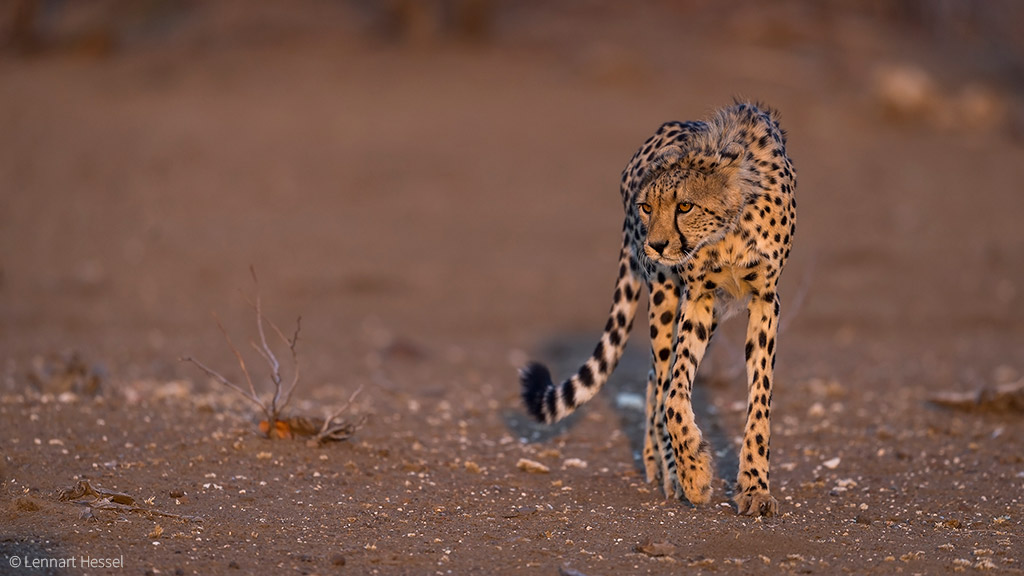
Cheetah © Lennart Hessel www.lensman.se
Medium-sized cats
4. Serval – Leptailurus serval
The serval is the only member of its genus and bears only a passing resemblance to a cheetah, despite regularly being mistaken for one thanks to their spotted coat and similar colouration. They are far smaller than cheetahs – weighing at most 18kg (large cheetah have been recorded weighing over 70kg). Their legs are very long, yet their tails appear almost disproportionately short, and their large ears are used to pinpoint to smallest rustles of rodents in the long grass. A hunting serval that has detected the sounds of rodents or other available prey remains motionless before launching upwards to heights of more than 2m and covering distances of over 3.5m.
The population of this inconspicuous cat is unknown, but their numbers are believed to be stable, and the IUCN Red List classifies them as being of ‘least concern’.
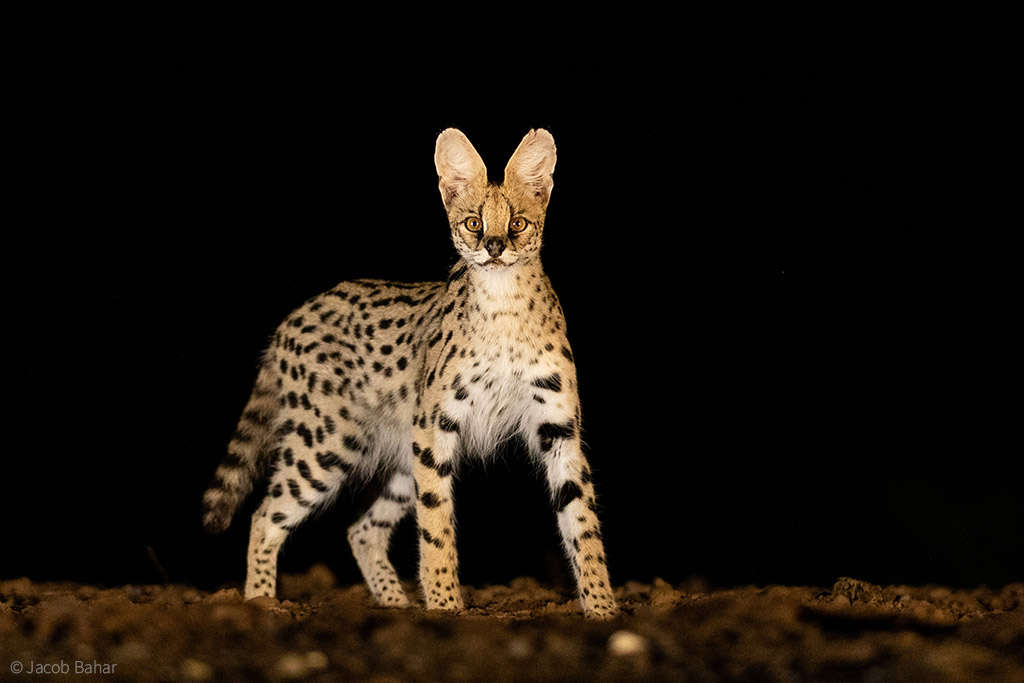
A serval (Leptailurus serval) © Jacob Bahar
5. Caracal – Caracal caracal
Slightly shorter and stockier looking than the sympatric serval, there is something particularly regal about the caracal. This look is complemented by the long tufts of fur extending from the tips of their ears. These reddish cats survive off small mammals and rodents but have been known to tackle larger prey such as young antelope. They are expert jumpers and regularly grab birds up to 3m in the air.
Their exact numbers in the wild are unknown, and they are classified as ‘least concern’ on the IUCN Red List. However, there are countries throughout its range where it is considered to be rare or endangered.

Caracal (Caracal caracal) © Giovanni Frescura
6. African Golden Cat – Caracal aurata
Few people are even aware of the existence of the African golden cat, and even less have had the good fortune to see one in the wild. This shy and secretive cat is endemic to the rainforests of West, and Central Africa and researchers are working hard to supplement the scant information available on its behaviour, distribution and ecology. Camera trap footage has been essential is capturing snippets of information about the golden cat, such as this footage of one hunting red colobus monkeys in Uganda.
Genetic analysis shows that it is closely related to the caracal and the two species do share a similar look, though the golden cat lacks the characteristic black ear tufts. While it is believed to be locally common in certain parts of Gabon and Uganda, this attractive cat is threatened by increasing habitat loss due to deforestation, as well as bushmeat hunting. It is classified as ‘vulnerable’ on the IUCN Red List.

African golden cat (Caracal aurata) © Laila Bahaa-el-din/ Panthera
The small cats
7. Jungle Cat – Felis chaus
Also known as the “swamp” or “reed” cat, this small felid is widespread throughout much of the Middle East, South and Southeast Asia but in Africa is found only in wetter regions of Egypt (mainly along the Nile Delta). This wetland dwelling cat prefers dense ground cover and hunts small rodents and birds. It is listed as ‘least concern’ on the IUCN Red List.

Jungle cat (Felis chaus) in Asia © Hardik Pala
8. African wildcat – Felis lybica
The ancestor of the domestic cat, these cats are often mistaken for their domestic cousins, though they can be distinguished (occasionally with difficulty) by their slightly longer, banded legs and reddish ear colouration. This genetic closeness is one of the greatest threats to African wildcat populations because interbreeding with domestic cats is common, resulting in significant genetic pollution. The African wildcat has only recently been recognised as being a distinct species – it was initially considered a subspecies of Felis silvestris (European wildcat), but the recent revision by the Cat Classification Task Force may see it shift from its current IUCN Red List conservation status of ‘least concern’.
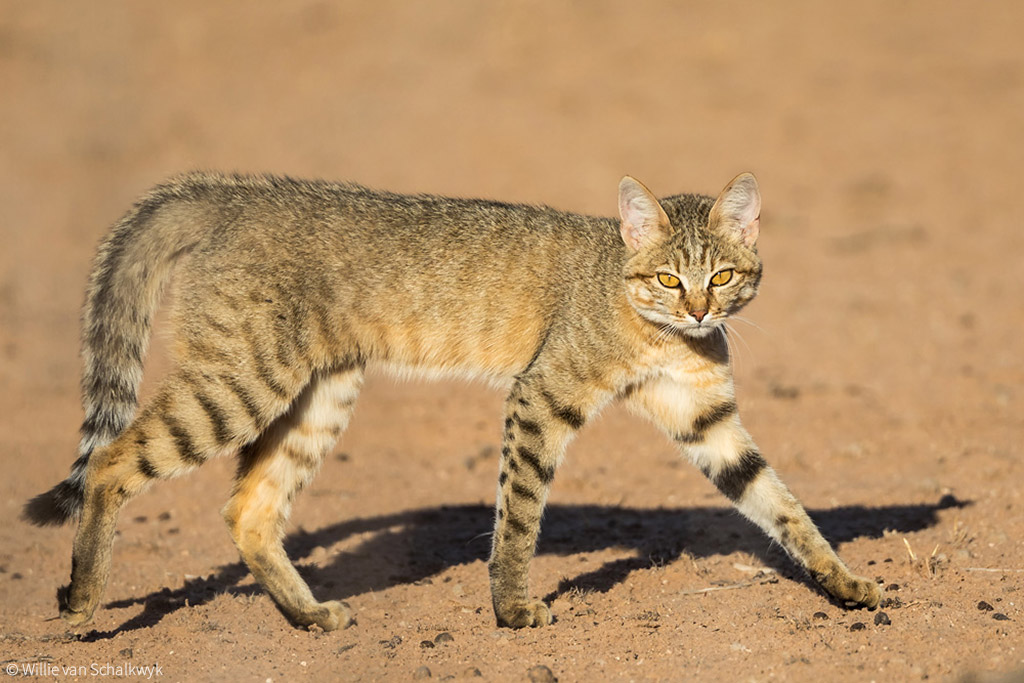
African wild cat (Felis lybica) © Willie van Schalkwyk
9. Sand cat – Felis margarita
This tiny desert-dwelling cat is well adapted to handle the extremes of its desert habitat, both in terms of a lack of water as well as the temperature fluctuations. The African subspecies F. m. margarita is slightly smaller and more yellow than the Asian subspecies. Interestingly, its ear canal is about twice the size of a domestic cat’s and its hearing is roughly five times more acute.
Though considered to be of least concern in terms of conservation status, these cats are secretive and hard to find. Rare images of sand cat kittens can be viewed here. Sand cats are classified as ‘least concern’ on the IUCN Red List.

An adult sand cat (Felis margarita) © Gregory Breton Panthera Sand Cat SaharaTeam
10. Black-footed cat – Felis nigripes
Also known as the “small-spotted cat”, the black-footed cat is the smallest of all of the African cat species and is endemic to the southwestern areas of Southern Africa. These tiny cats weigh less than 2kg on average but are reputed to be the most successful hunters of all the cat species.
While it is difficult for researchers to estimate the number of black-footed cats in the wild, they believe that there are less than 10,000 mature individuals and that the population is declining. For these reasons, the black-footed cat is listed as ‘vulnerable’ on the IUCN Red List.
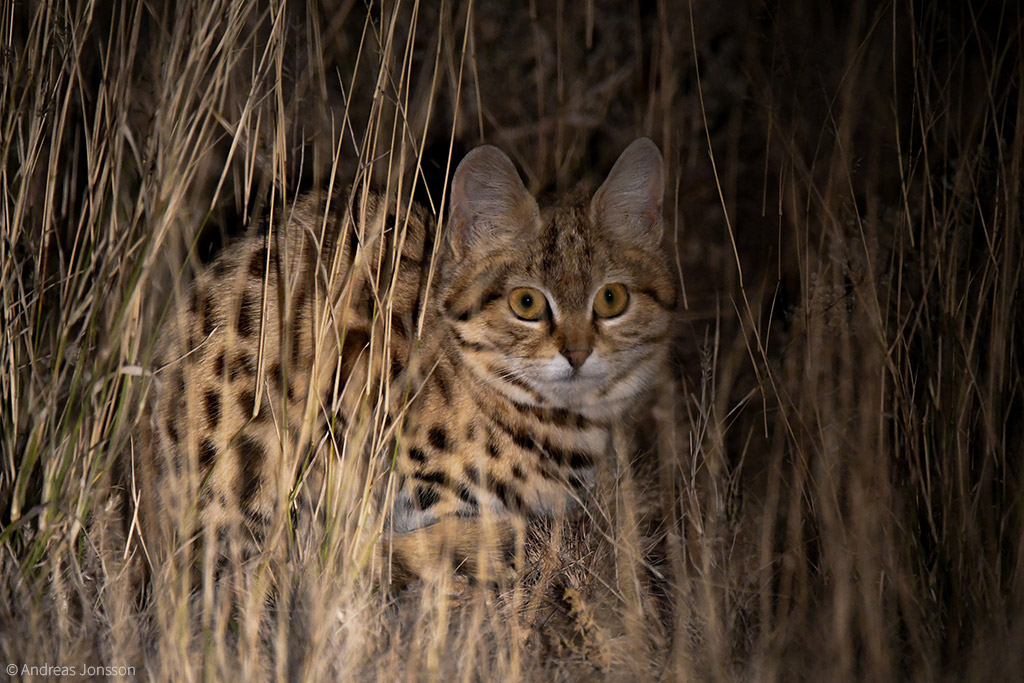
Black-footed cat (Felis nigripes) © Andreas Jonsson



